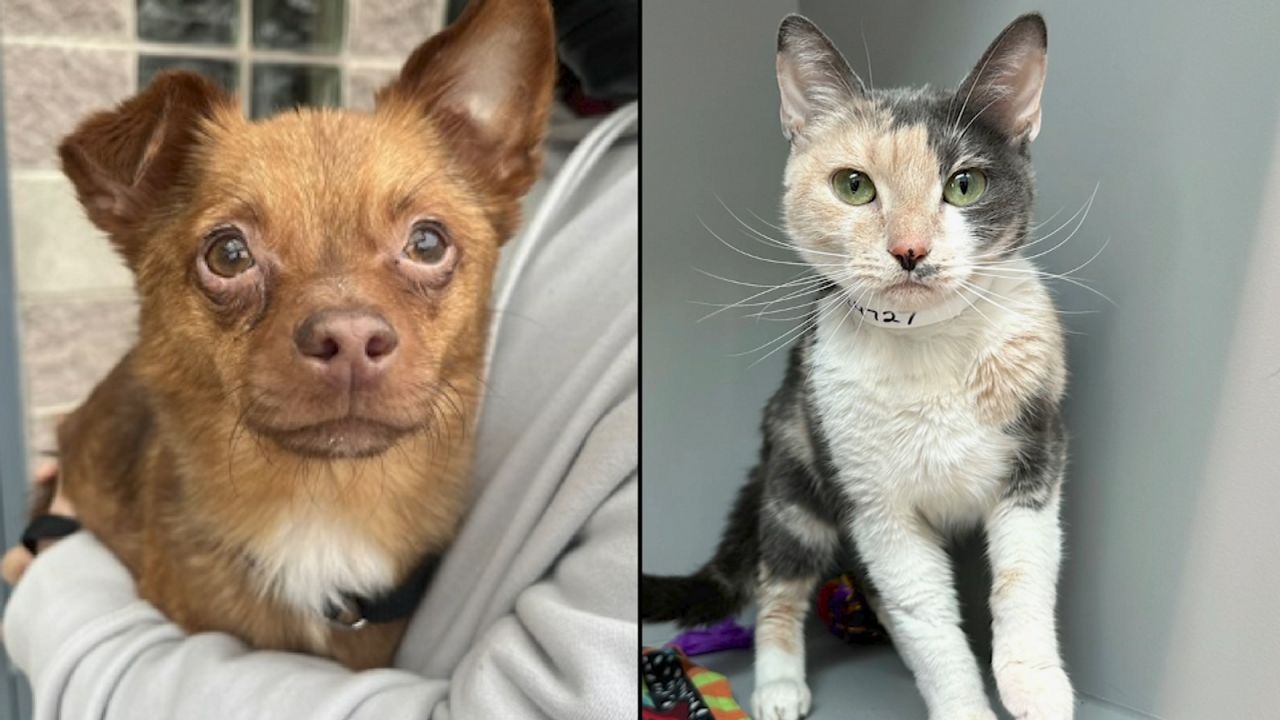The city estimates some 170,000 migrants have moved through the city’s shelter system, and that more than 100,000 still remain. But in recent days, the list of available shelters set up to help them has been slimmed down.
At one point, the Upper West Side hosted four locations within two miles of each other. Some residents welcomed the new arrivals with open arms, while others struggle with adjusting to a changing neighborhood.
Along West 86th Street at West End Avenue, a line forms for a weekly event called “Miracle Mondays” at St. Paul and St. Andrew United Methodist Church.
At the door, a volunteer welcomes newly arrived migrants who are waiting for life-changing services inside the church.
They get clothes, diapers, toiletries and other useful items like discounted subway cards, legal services and groceries.
Mirian Mairena Vaquedano, originally from Honduras, arrived in the city in July 2023, after crossing over the U.S.-Mexico border. A single mother, she learned about the church by word of mouth and spent some time picking out clothes for her six-year-old son.
“When I arrived, I didn’t have anything. People arrive with no clothes, with nothing, it’s like being born again,” Vaquedano told NY1 in Spanish.
Vaquedano is seeking asylum in the U.S. She fled what she says was a domestic violence situation, leaving her two older children behind in Honduras. Her son is in school here on the Upper West Side, and they live in a migrant shelter.
“Oh, this is beautiful, yeah, very nice,” said Karen Collins, while sorting through clothes donated by the community. Collins has lived on the Upper West Side for more than four decades, and volunteers at the church.
“I come every Monday because it’s very important that we welcome people, that this becomes a safe community place for people, especially when there’s a lot of fear in the air, and when there’s a lot of need,” she said.
The church and its partners helped 120 migrant families on the day NY1 visited.
However, some area residents like Celso Gomez, who has lived in the area for more than 50 years, are frustrated by the presence of migrant shelters in the neighborhood.
At the time NY1 met up with Gomez, there was a shelter on the same block as where he went to grade school, and where his current doctor is on West 70th Street.
“I see a patrol car out front, so I asked the officer, ‘what’s going on here, something I should know about?’ He said, ‘no we’re stationed here because of the shelter,’ I said, ‘what shelter?’ He’s like, ‘right here,’ I was like, ‘oh wow! I never knew that was a shelter,’” said Gomez, when recalling the story to NY1 about when he first learned about the Stratford Arms being a shelter.
Gomez says he’s not anti-immigrant having come from a Cuban and Dominican household, but he believes migrants are changing the feel of the neighborhood.
“The quality of life has changed drastically the last couple of years. I saw a lady with a baby sitting on the floor, begging for money with a sign. That’s something that we are not used to seeing up here. We have a homeless situation here but not to that degree,” said Gomez, who added that he gave her a few dollars because he felt bad for her.
Other Upper West Side residents also shared concerns about their perceptions about the quality of life,with some locals saying homeless New Yorkers are being left behind while the city focuses its resources on migrants.
“We have to help the people who have been here. The folks who are homeless need a lot of attention first as well,” Annette Aguilar said.
Some New Yorkers believe migrants are responsible for an increase in crime, but police do not track that data. As a sanctuary city, the NYPD does not ask people about their immigration status. A Sienna College poll from June 2024 shows 83% of New York voters believe the recent influx of migrants to the state is a serious problem.
The city has taken in more than 220,000 migrants since the spring of 2022 and has opened more than 200 sites to care for them.
Gomez hopes migrants find success in what he calls the land of opportunity, but he fears it could be at the expense of others.
“Now it’s littered with ebikes, and people sitting there, delivery guys just sitting there, you know, drinking, doing what they do,” Gomez said.
He’s heard those sentiments from neighbors, and says they were amplified leading up to this year’s election. However, Gomez says he did not vote for Donald Trump and, like others in the neighborhood, does not support the mass deportation the President-elect is planning.
“I’m terrified of mass deportations,” said Rev. Lea Matthews, a pastor St. Paul and St. Andrew United Methodist Church.
Leaders at St. Paul and St. Andrew say they’re worried their Miracle Mondays will be targeted.
“I’m terrified that we are now known as a place that is safe where people can gather. Well, does that mean exposing a community, who is in need, in a season of deportation? We’re gonna learn that together,” Rev. Matthews said.
Uncertain times for so many, including Vaquedano, who does have a work permit, but no money saved yet. She works part-time for the church in its daycare and cleans houses, but recently received a notice that her shelter is closing.
The 34-year-old says she dreams of a life of stability and a place to call her own.
“My short-term goal is to have my own place, that I can say, ‘this is my home,’” she said.






_PKG_Bronx_Zoo_Vulture_Chick_CG_134072176_2071)




